Toshiba Camileo X200 Review
Toshiba Camileo X200
Toshiba's Camileo X200 is decent value, with a generous accessory bundle, but its image quality is only mediocre.
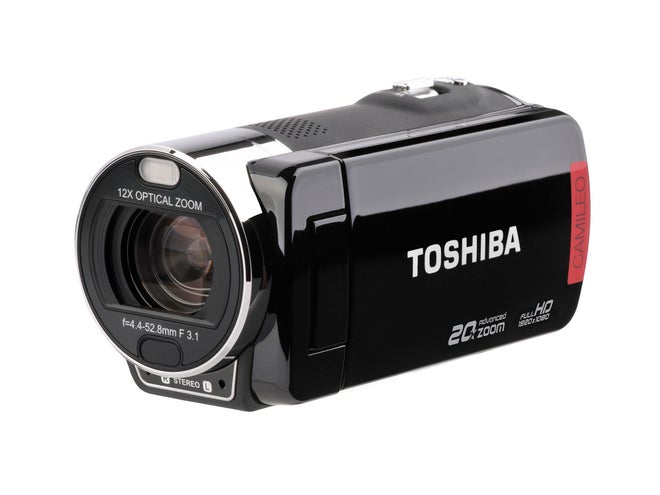
Verdict
Pros
- Range of fun features
- Generous accessory bundle
- Keen price
Cons
- Mediocre low light performance
- No manual focus, shutter or iris
Key Specifications
- Review Price: £152.20
- 8Mpixel CMOS
- 12x optical zoom; 20x Advanced Zoom
- Electronic image stabilisation
- MP4 Full HD at 1080/30p
- SDXC memory slot
The biggest difference between the two camcorders is the sensors they both use, and here things get a little complicated. At first glance, the X200 actually looks better than its more premium stable mate, as its CMOS has 8Mpixels whilst the X400’s has just 5Mpixels. However, the X400’s sensor incorporates back-side illumination, which makes it more light sensitive. So, in theory, the X200 will have inferior low light performance, although Toshiba doesn’t state the sensor size for either camcorder, which also has an effect on sensitivity.
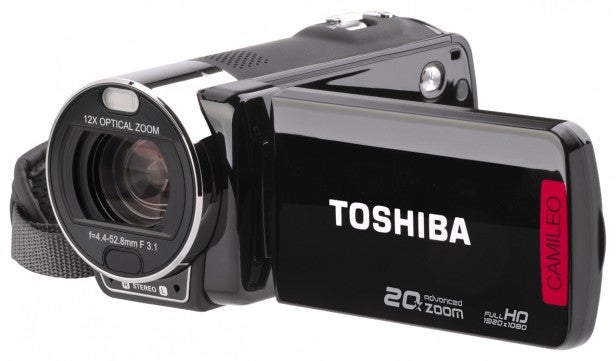
The differing sensors have another side effect. Where the X400 boasts a pretty healthy 23x optical zoom, the X200 only offers a more modest 12x. However, the X200’s extra pixel resolution is harnessed to provide an Advanced Zoom option, which boosts the factor to 20x. This crops into the sensor, so doesn’t lose resolution, whereas a conventional digital zoom simply enlarges the pixels, making the image look more blocky. However, the Advanced Zoom is either on or off. There’s no gradual progression between the two modes.
So the X200 has some clear inferiorities to the X400. But it also has lots of the same features. There’s a quick menu along the top of the touch screen, which provides access to the backlight compensation, video quality settings, Advanced Zoom, and video light options. It’s great to see backlight compensation so readily accessible, and video quality options extend all the way up to Full HD at 30 progresive frames per second. There are also 720p options at 60 and 30 frames per second, plus VGA at 30 frames per second.
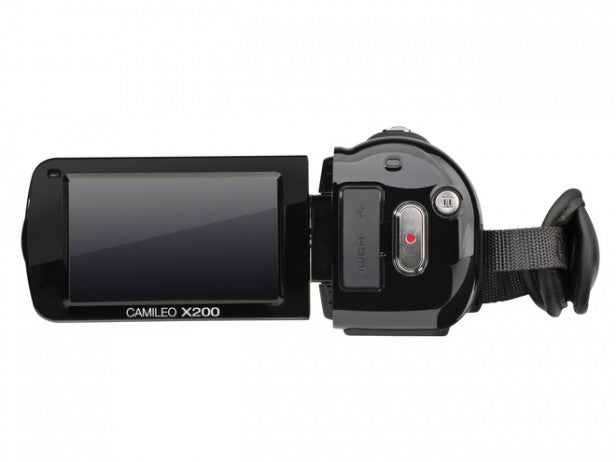
You can grab stills at up to 16Mpixels, too, which obviously entails a fair amount of interpolation, as it’s twice the sensor resolution. There’s a tiny 128MB of memory built in, so the SDXC card slot must be called upon for storage. With the top video data rate sitting at around 12Mbits/sec, you can store around 11 minutes of video per gigabyte.
You can grab stills at up to 16Mpixels, too, which obviously entails a fair amount of interpolation, as it’s twice the sensor resolution. There’s a tiny 128MB of memory built in, so the SDXC card slot must be called upon for storage. With the top video data rate sitting at around 12Mbits/sec, you can store around 11 minutes of video per gigabyte.
The X200 has a modest LED video light built in, but it also offers something Toshiba calls digital light. This is actually a boost in video gain, rather than a real light. So it does improve image brightness, but at the expense of introducing more grain. The image stabilisation is digital, too. So it’s only moderately effective, particularly compared to the hybrid optical systems now available in premium models from the big names of the camcorder business.
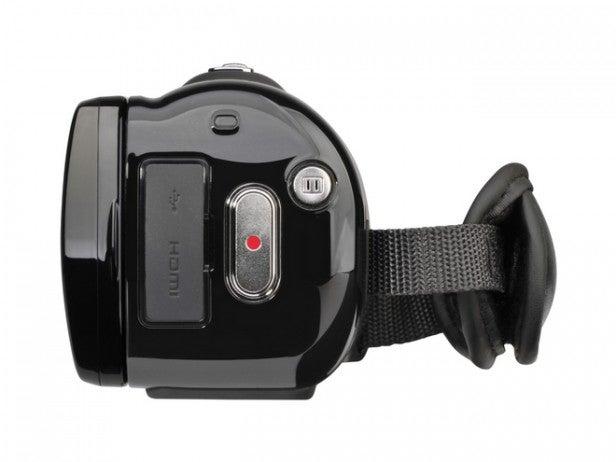
The icon-driven main menu provides access to a host of features and settings, although not the manual controls a videomaking enthusiast would want. So there’s no manual focus, shutter or iris configuration. Even the scene modes are limited to soft skin and night mode, and although there are white balance presets for tungsten, neon and sunlight, there’s no manual option. But there is a macro mode, and you can switch to centre or spot exposure. All of these must be accessed via the touch-screen LCD, with just buttons for cycling through the light modes, and switching between recording and playback.
The X200 is better endowed for features that are aimed at fun rather than serious videomaking. There’s a motion detection option, which triggers recording when action is picked up in the frame. You can also record slow motion video and time-lapse frames at intervals of one, three or five seconds. You can enable face tracking and a pre-record function, which buffers footage so when you hit record this can be added onto the beginning of your clip, to prevent missing an important event.
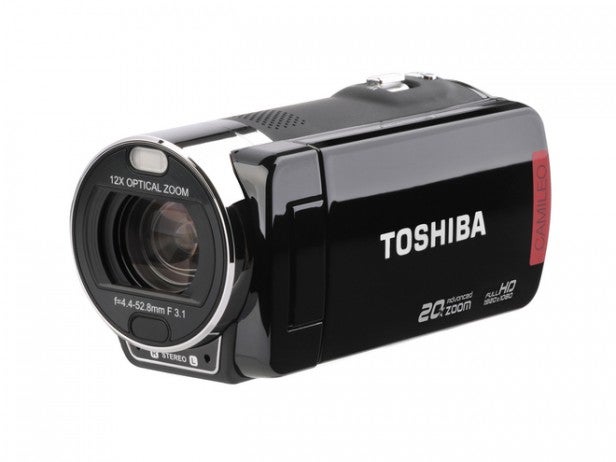
Strangely, the X200 sports a minijack microphone input, so you could
hook up an external device, athough there is no accessory shoe for
mounting anything on the camcorder itself. The accessories in the box
are generous, too, considering the price. An infrared remote is
included, plus a material pouch to keep the camcorder dust free. Best of
all, Toshiba has thrown in a mini to regular HDMI cable, so you can
hook the X200 up to your HDTV and watch your footage in all its digital,
high definition glory.
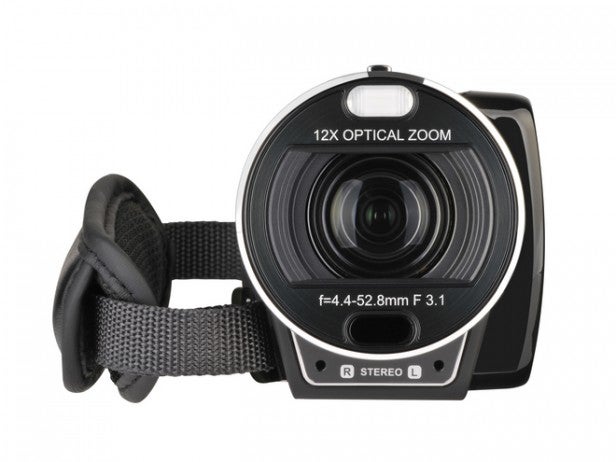
Image quality in good lighting is decent
enough. Colour can be overly saturated, and where there is extreme
contrast in light, bright areas can be slightly blown out whilst shadows
lose detail. But overall the picture is very acceptable. Video
performance in low light isn’t terrible, either, but it is behind that
of the X400, showing the benefits of the latter’s back-side illuminated
CMOS. The X200’s footage does maintain some colour in poor illumination,
but it isn’t very bright, and there is noticeable grain, more than the
X400 shows. The white balance also gives light-coloured areas a
yellowish tinge.
Verdict
Toshiba’s Camileo X200
does give you a fair amount for your money, and it’s around £20 cheaper
than the company’s own X400. However, its image quality is also behind
the latter, particularly in low light. So whilst the X400 takes a decent
step up in quality over Toshiba’s previous models, the X200 is more
like a small shuffle forward. It’s good value, but isn’t quite in the
same league as its slightly more expensive brother.
Strangely, the X200 sports a minijack microphone input, so you could hook up an external device, athough there is no accessory shoe for mounting anything on the camcorder itself. The accessories in the box are generous, too, considering the price. An infrared remote is included, plus a material pouch to keep the camcorder dust free. Best of all, Toshiba has thrown in a mini to regular HDMI cable, so you can hook the X200 up to your HDTV and watch your footage in all its digital, high definition glory.
Image quality in good lighting is decent enough. Colour can be overly saturated, and where there is extreme contrast in light, bright areas can be slightly blown out whilst shadows lose detail. But overall the picture is very acceptable. Video performance in low light isn’t terrible, either, but it is behind that of the X400, showing the benefits of the latter’s back-side illuminated CMOS. The X200’s footage does maintain some colour in poor illumination, but it isn’t very bright, and there is noticeable grain, more than the X400 shows. The white balance also gives light-coloured areas a yellowish tinge.
Verdict
Toshiba’s Camileo X200 does give you a fair amount for your money, and it’s around £20 cheaper than the company’s own X400. However, its image quality is also behind the latter, particularly in low light. So whilst the X400 takes a decent step up in quality over Toshiba’s previous models, the X200 is more like a small shuffle forward. It’s good value, but isn’t quite in the same league as its slightly more expensive brother.
Trusted Score
Score in detail
-
Design 7
-
Image Quality 7
-
Features 7
-
Value 9
-
Perfomance 7
Image Processor
| Image Sensor | 8Mpixel CMOS |
| Image Sensor Quantity | 1 |
Lens Features
| Optical Zoom (Times) | 12x |
| Digital Zoom (Times) | 60x |
Video Recording
| Recording Media | SD card |
| Video Capture Format | MP4 |
| Max Video Res | 1920 x 1080 |
| Image Stabilisation | Electronic |
General Features
| LCD Screen Size (Inch) | 3in |
| On-board Storage (Gigabyte) | 0.128GB |
| On-board Microphone | Stereo |
A/V ports
| HDMI | Mini |
| USB 2.0 | Yes |
| Audio / Video Out | No |
| Audio / Video In | No |
| External Microphone | Yes |
Physical Specifications
| Weight (Gram) | 301g |


